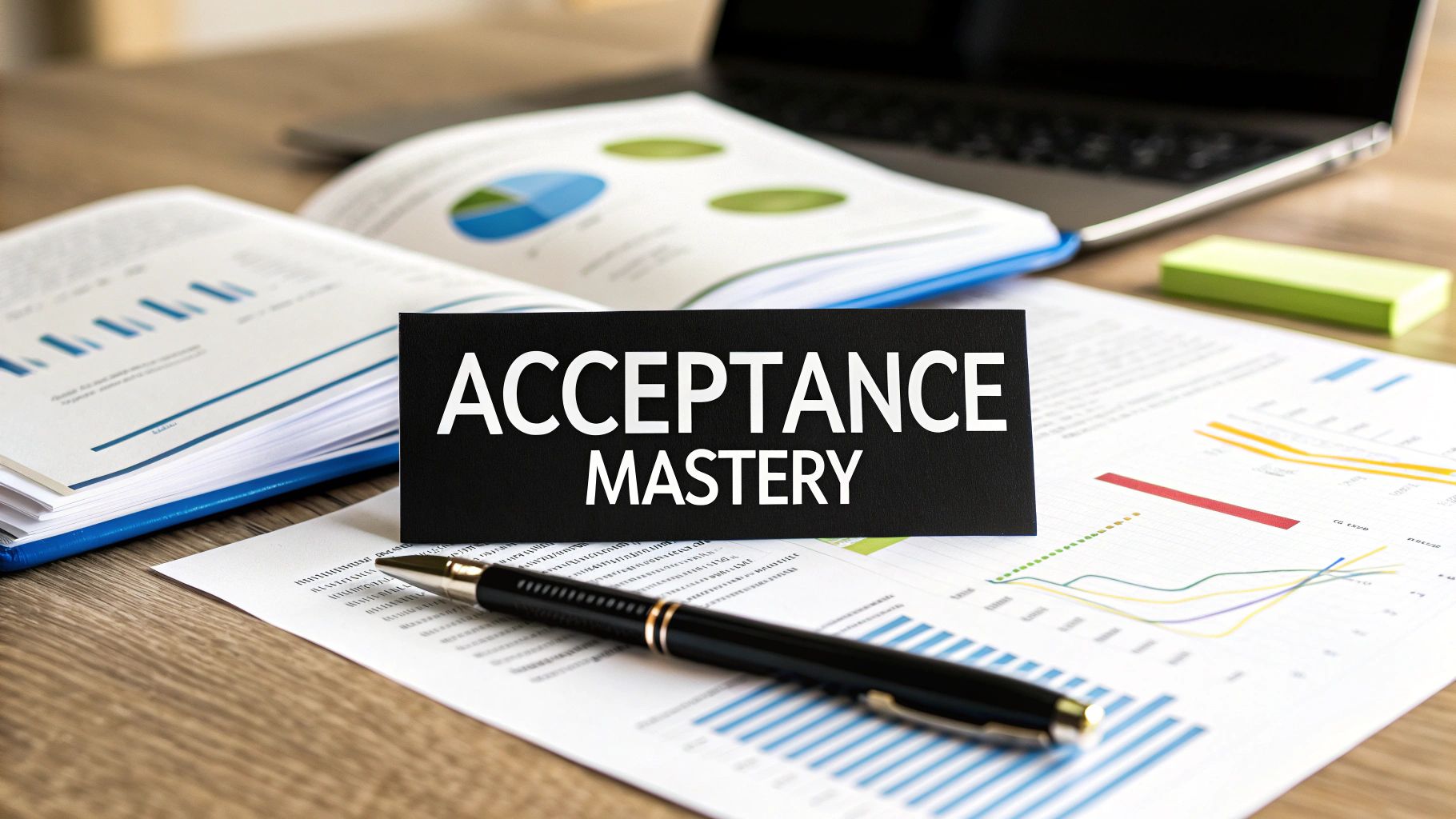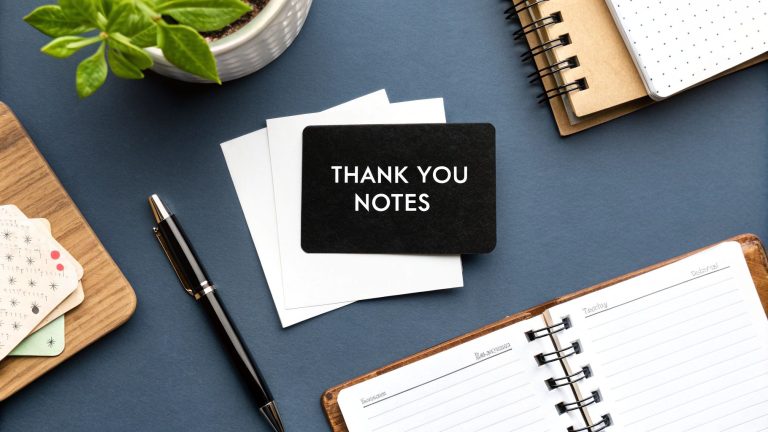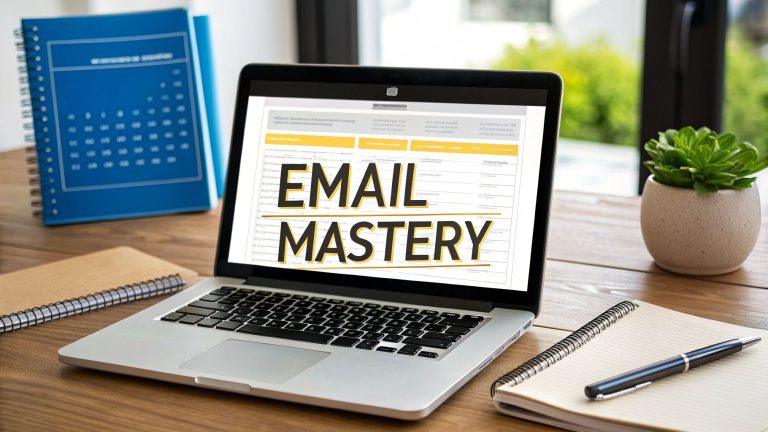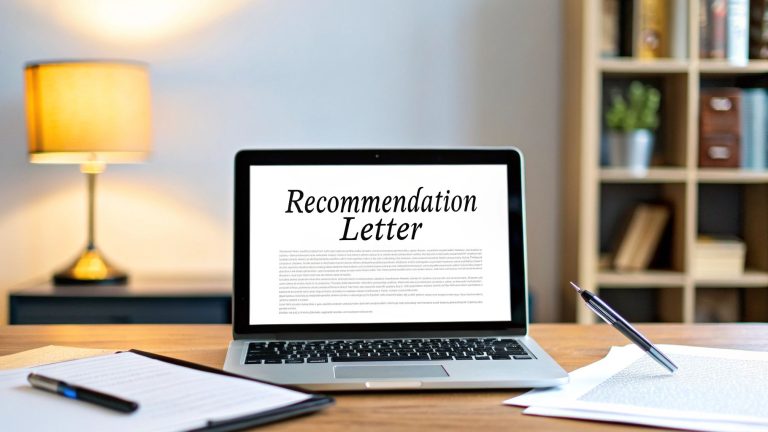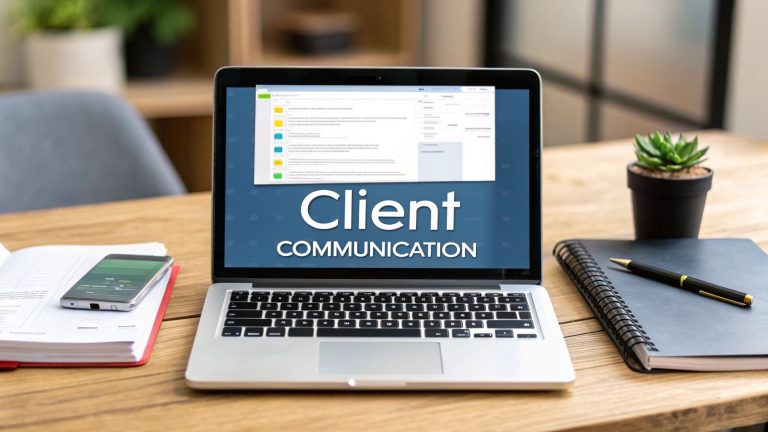Accepting an offer is more than just saying “yes”. It’s the first step in a new professional or academic relationship, and your acceptance letter sets the initial tone. A well-crafted response solidifies your decision, confirms key details, and reinforces the positive impression you’ve already made. It’s an opportunity to express genuine enthusiasm and professionalism, ensuring you start this new chapter on a strong, confident footing.
This article moves beyond simple templates. We will dissect powerful examples of acceptance letters for various common scenarios, from university admissions and job offers to scholarship awards and board positions. For each example, we will provide a detailed strategic breakdown, analyzing the specific choices made in tone, structure, and language.
You will gain actionable takeaways and replicable strategies to craft your own compelling acceptance. Whether you need to formally accept a new role, a place in a coveted program, or a prestigious honor, this guide provides the insights you need. We’ll show you how to move from a simple confirmation to a document that strengthens your new connection and paves the way for future success.
1. College/University Admission Acceptance Letter
A college or university admission acceptance letter is the official confirmation an applicant receives from an academic institution, granting them a place in a specific degree program. This document marks the successful end of a long application process and the beginning of a student’s higher education journey. It serves as both a warm welcome and a critical guide to the next steps.
For applicants, this letter is one of the most anticipated pieces of mail they will ever receive. For universities, it is a key tool for converting an applicant into an enrolled student. The best examples of acceptance letters blend a celebratory tone with clear, actionable information to make the transition seamless.
Strategic Breakdown and Analysis
Effective admission letters do more than just say “You’re in.” They build excitement and provide a clear roadmap for what comes next.
- Personalization: Top-tier institutions like Harvard often include the student’s name, intended major, and sometimes even a personalized note or a real signature from a dean. This small touch makes the applicant feel valued and seen, not just like another number.
- Clarity of Action: State university systems excel at providing detailed, step-by-step instructions. They clearly outline deadlines for accepting the offer, paying an enrollment deposit, and registering for classes. This clarity prevents confusion and reduces the administrative burden on both the student and the institution.
- Welcoming Tone: While formal, the language is often warm and congratulatory. Phrases like “We are delighted to welcome you” or “Congratulations on this outstanding achievement” set a positive tone and help build an early connection with the university community.
Actionable Takeaways
Whether you are an admissions officer crafting a letter or a student analyzing one, look for these key elements:
- Congratulatory Opening: Start with a clear and enthusiastic statement of acceptance.
- Specific Program Details: Mention the specific degree program or school the student was admitted to.
- Clear Next Steps: Use a checklist or numbered list to outline mandatory actions like submitting a deposit, applying for housing, and signing up for orientation.
- Firm Deadlines: Make all deadlines bold and easy to find to create a sense of urgency and prevent missed opportunities.
This simple process flow infographic illustrates the critical first steps a student must take after receiving their acceptance letter.
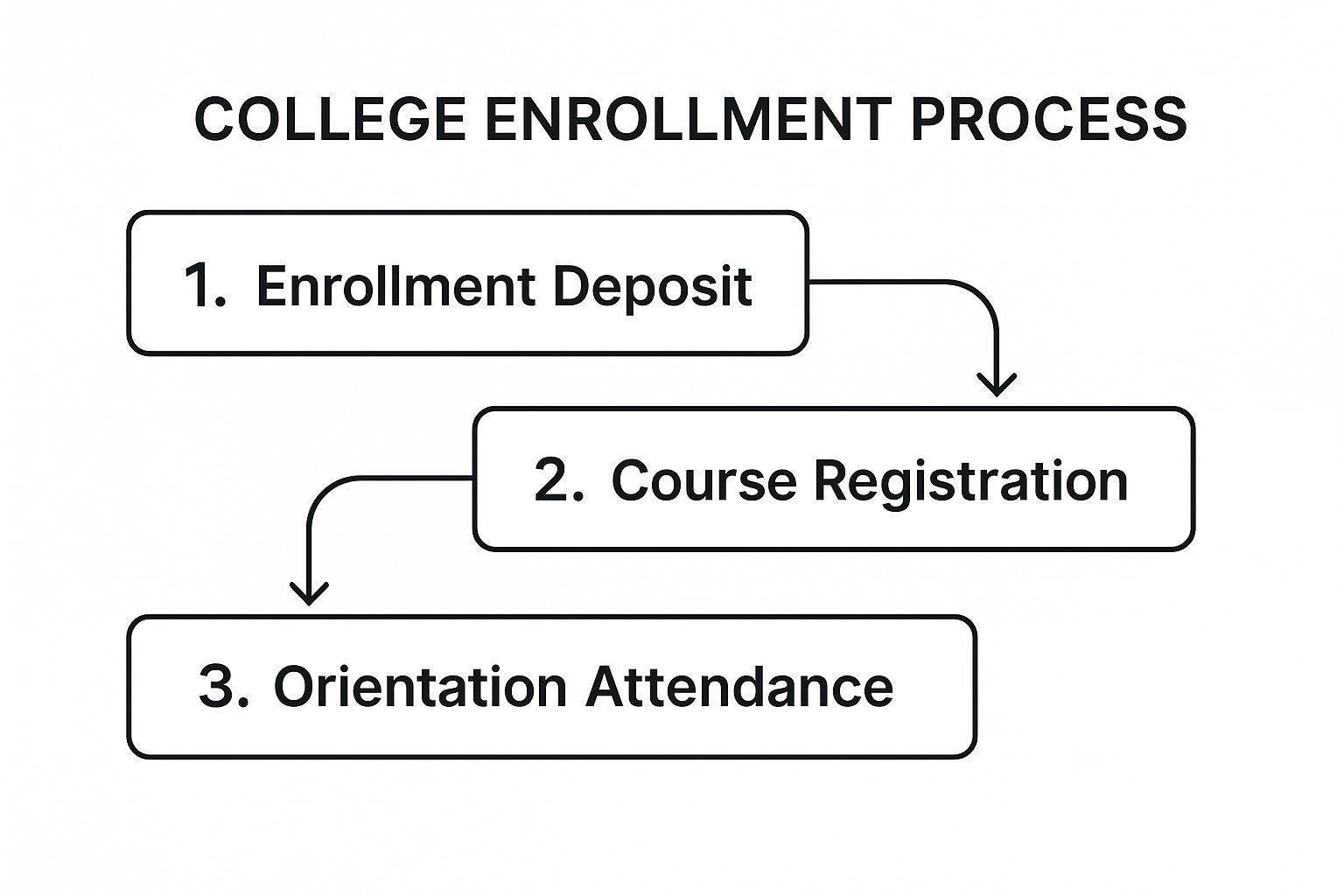
The infographic highlights how each step logically follows the previous one, guiding the student from initial commitment to full integration.
When to Use This Format
This formal yet welcoming format is standard for all higher education institutions, from community colleges to Ivy League universities. The structure ensures all legal and administrative bases are covered while making the student feel excited about their choice. Understanding the proper structure is also helpful for students. For a deeper look into professional correspondence, learn more about how to format a letter.
2. Job Offer Acceptance Letter
A job offer acceptance letter is a formal document sent by a candidate to a prospective employer to officially accept an offer of employment. This letter confirms the candidate’s agreement to the terms and conditions outlined in the offer, including salary, start date, and job title. It serves as a professional courtesy that solidifies the verbal agreement and sets a positive tone for the new working relationship.

For the candidate, this letter is a crucial step in securing a new role and creating a written record of the agreed-upon terms. For employers, it provides formal confirmation of the candidate’s commitment, allowing them to close the recruitment process and begin onboarding. The most effective examples of acceptance letters are concise, enthusiastic, and clear, leaving no room for misunderstanding.
Strategic Breakdown and Analysis
A well-crafted job acceptance letter does more than just say “I accept.” It reinforces your professionalism and confirms mutual understanding of the employment agreement.
- Enthusiasm and Appreciation: Leading tech companies often receive acceptance letters that express genuine excitement for the role and the company’s mission. Using phrases like “I am thrilled to accept the position” or “I am eager to contribute to the team” helps build immediate rapport.
- Confirmation of Key Terms: Executive-level acceptance letters meticulously restate the critical terms of the offer, such as salary, bonus structure, equity compensation, and start date. This practice ensures both parties are aligned on the complex details of the compensation package, preventing future disputes.
- Proactive Next Steps: Candidates in specialized fields like healthcare often use the acceptance letter to inquire about next steps related to credentialing or licensing. This shows initiative and helps the HR team streamline the onboarding process.
Actionable Takeaways
Whether you are a candidate accepting a new role or an HR manager advising one, these elements are essential for a powerful acceptance letter:
- Clear Statement of Acceptance: Begin by explicitly stating that you are accepting the job offer for the specific position.
- Restate Essential Terms: Briefly mention the key terms like your title, start date, and salary to confirm your understanding.
- Express Gratitude: Thank the hiring manager and the company for the opportunity.
- Inquire About Onboarding: Ask what the next steps are regarding paperwork, orientation, or any pre-employment requirements.
When to Use This Format
This professional yet appreciative format is standard for accepting any formal job offer, from entry-level positions to C-suite appointments. It is a critical piece of professional correspondence that finalizes the hiring process. Before drafting your acceptance, learn how to effectively evaluate a job offer to ensure it aligns with your career goals. For a more comprehensive look at business correspondence, you can learn more about professional letter writing.
3. Scholarship Award Acceptance Letter
A scholarship award acceptance letter is the formal document a student sends to an organization to officially accept financial aid. This letter is a crucial piece of communication that confirms the recipient’s gratitude and their understanding of the terms and conditions tied to the award. It solidifies the relationship between the student and the awarding body, whether it’s a private foundation, a corporation, or the university itself.
For the student, this letter is more than a simple thank you note; it’s a professional commitment to uphold the standards of the scholarship. For the awarding organization, the letter serves as official confirmation that their offered funds have been accepted, allowing them to finalize their records and disburse the aid. A well-written acceptance is a key part of financial aid management.
Strategic Breakdown and Analysis
Effective scholarship acceptance letters balance genuine appreciation with professional responsibility. They go beyond a simple “I accept” to build a positive relationship with the benefactor.
- Express Sincere Gratitude: Leading scholarship providers, like the Gates Millennium Scholars Program, look for recipients who understand the magnitude of the opportunity. Letters that specifically mention how the scholarship will impact the student’s education or career goals are far more memorable and meaningful.
- Acknowledge the Terms: Corporate-sponsored scholarships often come with specific obligations, such as maintaining a certain GPA, attending events, or completing an internship. The acceptance letter must explicitly acknowledge and agree to these terms, showing the student is responsible and detail-oriented.
- Reinforce Shared Values: When accepting a scholarship from a foundation with a specific mission, such as environmental conservation or community service, mentioning your alignment with those values strengthens the connection. It shows you aren’t just taking the money; you are joining their cause.
Actionable Takeaways
Whether you are a student accepting an award or a committee member reviewing acceptances, these elements are critical for an effective letter:
- Start with a Clear Statement: Begin by clearly stating your acceptance of the specific scholarship by name.
- Express Personalized Gratitude: Thank the committee or organization, and briefly explain why this award is personally significant to you.
- Confirm Key Obligations: Explicitly mention your understanding and acceptance of any requirements, such as GPA minimums, enrollment status, or renewal criteria.
- Offer Future Engagement: Conclude by expressing interest in future communication or opportunities to connect with the organization, showing you see this as a long-term relationship.
When to Use This Format
This format is essential whenever a student is awarded any form of scholarship, grant, or fellowship from an external organization or a specific university department. It is a non-negotiable step in the financial aid process that formalizes the agreement between the giver and the recipient. It serves as a professional courtesy that can open doors to future networking, mentorship, and support from the sponsoring organization.
4. Speaking Engagement Acceptance Letter
A speaking engagement acceptance letter is a professional document used to formally accept an invitation to speak at an event, such as a conference, workshop, or corporate meeting. This letter moves beyond a simple “yes” to serve as a written record that confirms key logistical details, outlines expectations for the presentation, and solidifies the terms of the engagement, including any compensation or travel arrangements.

For the speaker, it establishes professionalism and prevents future misunderstandings. For event organizers, it provides official confirmation and a clear reference point for planning. Well-crafted examples of acceptance letters in this context are a blend of graciousness and meticulous detail, ensuring both parties are perfectly aligned.
Strategic Breakdown and Analysis
An effective speaking acceptance letter functions as a preliminary contract, clarifying all critical terms before the event. It is a tool for proactive communication and professional courtesy.
- Confirmation of Details: Professional speakers bureaus and seasoned industry experts excel at explicitly restating the core details. Their letters confirm the event name, date, time, location, and the specific title of their presentation. This repetition acts as a safeguard against miscommunication.
- Clarification of Expectations: The best letters proactively address content and technical needs. They might confirm the presentation’s length, request information about the audience demographics to tailor the content, and specify A/V requirements like a projector, microphone, or specific software.
- Formalization of Terms: Corporate trainers and keynote speakers often use this letter to reiterate agreed-upon terms. This includes the speaking fee, payment schedule, and clear arrangements for travel, accommodation, and meal reimbursements. Putting these terms in writing protects both the speaker and the organizer.
Actionable Takeaways
Whether you are a speaker accepting a gig or an organizer receiving confirmation, these elements are crucial for a clear and professional exchange:
- Enthusiastic Opening: Begin by expressing genuine appreciation for the invitation and formally accepting the engagement.
- Recap of Logistics: Clearly list the confirmed details: event title, date, time, venue, and the topic of your speech. Use a bulleted list for readability.
- Outline of Requirements: Specify any technical, travel, or logistical needs. Mention if you will need a projector, a specific type of microphone, or a teleprompter.
- Agreement on Terms: If applicable, restate the financial terms, including the speaking fee, payment due dates, and reimbursement policies for expenses.
When to Use This Format
This format is essential for anyone accepting a formal speaking role, from an academic presenting at a symposium to a thought leader delivering a keynote at an industry conference. It is standard practice for professional speakers, corporate trainers, and anyone whose engagement involves travel, compensation, or significant logistical coordination. Using a formal acceptance letter establishes a professional tone from the outset and ensures a smooth, well-organized experience for everyone involved.
5. Award or Recognition Acceptance Letter
An award or recognition acceptance letter is a formal response from an individual or organization that has been chosen to receive an honor. This document serves to graciously accept the award, express gratitude to the granting body, and acknowledge the significance of the recognition. It is a key piece of professional correspondence that reinforces the recipient’s character and appreciation.
For the recipient, this letter is an opportunity to show humility and thank those who contributed to their success. For the organization presenting the award, the acceptance letter confirms the recipient’s participation in any related ceremonies and formally closes the loop on the selection process. The best examples of acceptance letters in this category are sincere, concise, and professional.
Strategic Breakdown and Analysis
A well-crafted award acceptance letter does more than simply say “thank you.” It builds goodwill, acknowledges support systems, and reflects positively on both the recipient and the awarding organization.
- Expression of Genuine Gratitude: Successful letters, like those from recipients of community service awards, open with a sincere and humble expression of thanks. They name the specific award and the organization, showing that the recipient values the honor and has paid close attention to the details.
- Acknowledgement of Others: Industry innovation or lifetime achievement honors are rarely won alone. Effective letters often include a sentence or two acknowledging the team, mentors, or family who supported the recipient. This demonstrates leadership and generosity of spirit.
- Confirmation of Logistics: The letter must address the practical aspects of the award. It should clearly confirm attendance at the award ceremony or event, if applicable. This logistical confirmation is crucial for event organizers.
Actionable Takeaways
Whether you are accepting a professional excellence award or community recognition, your letter should include these essential elements:
- Prompt and Grateful Opening: Begin by stating your acceptance and expressing sincere gratitude for being chosen for the specific award.
- Acknowledge the Organization: Mention the awarding committee or organization by name to personalize the letter.
- Share the Credit: Briefly thank the team, colleagues, or mentors who helped you achieve the milestone.
- Confirm Attendance and Next Steps: Clearly state whether you will attend the ceremony and inquire if any further information is needed from you.
This structured approach ensures your acceptance is received with the same grace and professionalism that earned you the award in the first place.
When to Use This Format
This format is appropriate for any situation where a formal honor is bestowed. It is used by professionals accepting industry innovation awards, academics receiving research grants, community leaders being recognized for civic contributions, and employees receiving corporate recognition. The letter is a crucial part of maintaining a professional image and showing respect for the awarding institution. To ensure your correspondence is always appropriate, review the key principles of letter writing etiquette dos and don’ts.
6. Board Position Acceptance Letter
A board position acceptance letter is a formal document used by an individual to officially accept an appointment to a corporate board, nonprofit board, or advisory committee. This letter is a critical piece of executive-level communication that confirms the appointee’s understanding of their new role, including fiduciary duties, time commitments, and governance responsibilities. It formalizes the agreement and sets a professional tone from the outset.
For the individual, this letter marks their entry into a significant leadership and oversight role. For the organization, it’s the final step in securing a key decision-maker. The most effective examples of acceptance letters in this context are concise, professional, and clear, confirming the terms of the appointment and expressing enthusiasm for the role ahead.
Strategic Breakdown and Analysis
A well-crafted board acceptance letter goes beyond a simple “yes.” It serves as a legal and professional record of the agreement and demonstrates the new member’s understanding of the position’s gravity.
- Confirmation of Terms: Leading corporate governance experts advise that the letter should explicitly reference the offer and reiterate key terms. This includes the start date, any committee assignments, and compensation details if applicable. This creates a clear, mutual understanding and prevents future disputes.
- Acknowledgment of Responsibility: The letter should subtly acknowledge the fiduciary duties and legal responsibilities involved. Phrases like “I look forward to contributing to the company’s governance” or “I am eager to uphold the mission of the organization” show a commitment to the role’s serious nature.
- Professional Enthusiasm: While the tone is formal, it should also convey genuine interest and a collaborative spirit. Expressing excitement to work with the existing board members and leadership team helps build immediate rapport and signals a commitment to active participation.
Actionable Takeaways
Whether you are an executive joining a corporate board or a volunteer joining a nonprofit committee, your acceptance letter should include these elements:
- Formal Opening: Begin by formally addressing the board chair or CEO and explicitly stating your acceptance of the offered position.
- Reference Key Details: Mention the specific title (e.g., “Member, Board of Directors”) and the effective date of your appointment.
- Express Commitment: Briefly state your commitment to the organization’s mission and your enthusiasm for the new role.
- Acknowledge Next Steps: Mention any onboarding processes or initial meetings discussed to show you are prepared and proactive.
When to Use This Format
This formal acceptance letter format is essential whenever accepting a position on any governing or advisory body. It applies to roles on corporate boards for public companies, nonprofit board appointments, advisory boards for startups, and trustee positions at educational institutions. The document provides a clear, official record of acceptance, which is vital for corporate governance and legal documentation.
Similar to how one might express initial interest in a role, the acceptance letter solidifies a formal relationship. For those exploring how to initiate such opportunities, understanding the nuances of a letter of interest can be beneficial. Learn more about how to write an effective letter of interest.
Acceptance Letter Types Comparison Overview
| Letter Type | Implementation Complexity | Resource Requirements | Expected Outcomes | Ideal Use Cases | Key Advantages |
|---|---|---|---|---|---|
| College/University Admission | Moderate – requires formal format with official branding | Moderate – coordination with admissions office | Clear enrollment steps, legal admission confirmation | New student admissions at academic institutions | Provides clear timelines and comprehensive info |
| Job Offer Acceptance | Low to Moderate – professional tone with attention to terms | Low – mainly communication between candidate and employer | Formal agreement on job terms, prevents misunderstandings | Employment confirmations across industries | Creates clear record and demonstrates professionalism |
| Scholarship Award Acceptance | Moderate – clear acknowledgment of terms and obligations | Low to Moderate – involves coordination with financial aid | Confirmed financial support, accountability for requirements | Scholarships and financial aid recipients | Secures funding and shows responsibility |
| Speaking Engagement Acceptance | Moderate – detailed logistics and agreement on expectations | Moderate – requires negotiation of compensation and arrangements | Clear commitments for event participation | Presenters at conferences, workshops, events | Establishes expectations and professionalism |
| Award or Recognition Acceptance | Low – formal yet gracious letter format | Low – direct communication with awarding body | Acceptance of honors with commitment to responsibilities | Award recipients in professional or community settings | Enhances reputation and creates networking |
| Board Position Acceptance | High – legal, fiduciary, and governance understanding needed | High – requires legal review and commitment of time | Acceptance of board role with fiduciary duties | Corporate, nonprofit, or advisory board appointments | Provides leadership opportunities and enhances professional standing |
Craft Your Perfect Acceptance Letter in Seconds
We’ve explored a wide range of examples of acceptance letters, from securing a new job to accepting a prestigious award. Each sample, whether for a university admission or a board position, reveals a simple but powerful truth: a great acceptance letter is more than just a confirmation. It’s your first official act in a new role, a new chapter, or a new partnership.
The right words establish a professional tone, reinforce your enthusiasm, and clarify critical details to prevent future misunderstandings. As we analyzed, the most effective letters are clear, concise, and tailored to the specific context. They reflect your understanding of the opportunity and express genuine appreciation, setting the stage for a successful start.
Key Takeaways for Your Next Acceptance
Remember these core principles drawn from the examples we’ve reviewed:
- Clarity is King: Always begin with a direct statement of acceptance. Don’t leave the reader guessing. State your intention clearly in the first sentence.
- Acknowledge Key Details: Confirm important information like your start date, salary, scholarship amount, or the title of your accepted role. This demonstrates attention to detail and creates a written record.
- Express Genuine Gratitude: A sincere thank you goes a long way. Acknowledging the person or committee who extended the offer builds goodwill and shows you value the opportunity.
- Match the Tone: A formal job offer requires a more professional tone than accepting a speaking engagement at a casual conference. Always adapt your language to fit the organization’s culture and the context of the offer.
Turning Examples into Action
The true value of these examples of acceptance letters lies in their application. They provide a strategic blueprint you can adapt for your own unique situations. Before writing, ask yourself: What is the single most important message I need to convey? What tone will best represent me and this new relationship?
By focusing on these strategic elements, you move beyond simple templates and craft communication that is both effective and authentic. As you become more comfortable drafting these communications, you might find that using AI tools can dramatically speed up the process. To get the most out of such platforms, you might benefit from mastering AI prompt engineering, which helps you provide the precise instructions needed to generate a perfectly tailored letter.
Ultimately, every acceptance letter is a bridge to a new beginning. It closes one chapter of searching and opens another of opportunity. By writing a thoughtful, clear, and enthusiastic acceptance, you ensure that you cross that bridge with confidence and professionalism, making a strong first impression that will last.
Ready to write your next acceptance letter without the stress? The AI Letter Generator uses the same principles we’ve discussed to help you create a polished, professional letter in seconds. Simply provide the details, choose your tone, and let our tool craft the perfect response for you. Start your next chapter with confidence today.
